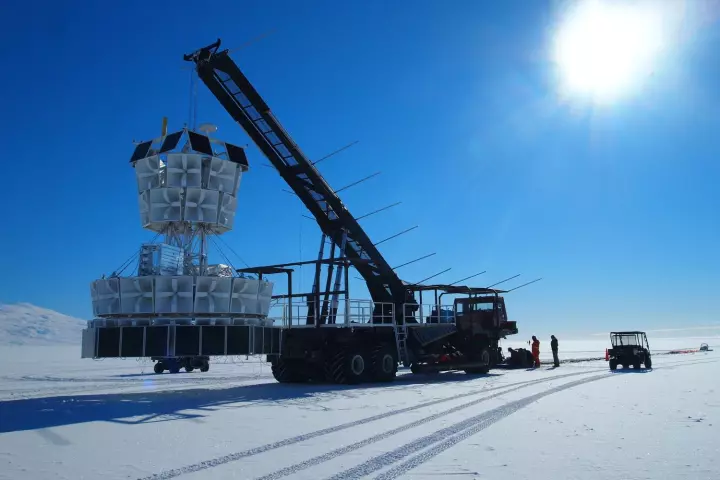Neutrino
-
It may sound like a plot twist out of a science fiction novel, but researchers have detected mysterious radio signals coming from beneath the Antarctic ice that appear to be inconsistent with the standard models of particle physics.
-
Physicists have detected “ghost particles” in the Large Hadron Collider for the first time. An experiment called FASER picked up signals of neutrinos being produced in particle collisions, which can help scientists better understand key physics.
-
Normal matter has an “evil twin” that annihilates on contact, and despite decades of study antimatter remains very mysterious. So what actually is it? Where is it? Why is it important to understand? And why hasn’t it already destroyed the universe?
-
We’re all familiar with the march of time, but why it does so is a mystery. In 2016 Australian physicist Joan Vaccaro proposed a new quantum theory of time, and now a team will test the hypothesis by searching for time dilation in a nuclear reactor.
-
Borexino, a huge underground particle detector in Italy, has picked up a never-before-seen type of neutrino coming from the Sun. These neutrinos confirm a 90-year-old hypothesis and complete our picture of the fusion cycle of the Sun and other stars.
-
The Super-Kamiokande neutrino observatory in Japan has received an upgrade. A rare-earth element called gadolinium has been added to the water in the facility, which will make it more sensitive to neutrinos from more distant and ancient supernovae.
-
An extensive search for a hypothetical particle has turned up empty. The sterile neutrino is a proposed subatomic particle that could even be a candidate for the mysterious dark matter, but two new experiments have all but ruled it out.
-
An experiment designed to hunt for ever elusive dark matter has returned some strange and exciting signals. Out of the three possible explanations, one is unwanted interference – while the other two would herald new physics.
-
Headlines lately have been screaming about how scientists in Antarctica have discovered evidence of a parallel universe where time runs backwards. While we seriously wish that was true, a new study has put forward a more realistic explanation.
-
There are billions of tiny particles called neutrinos streaming through your body right now. But where did they come from? Researchers have now traced back some ultra-high energy neutrinos to their points of origin – radio flares from raging quasars.
-
Equal amounts of matter and antimatter should have been created in the Big Bang, but this would just have annihilated itself. Now, physicists have proposed a new theory that explains the mystery – and outlined how we can find direct evidence of it.
-
About 3.7 billion years ago, a neutrino was thrown out of a blazar and launched towards Earth. The ghostly particle was detected by the IceCube Neutrino Observatory in Antarctica and traced back to its point of origin, helping to confirm the most distant neutrino source ever identified.
Load More











